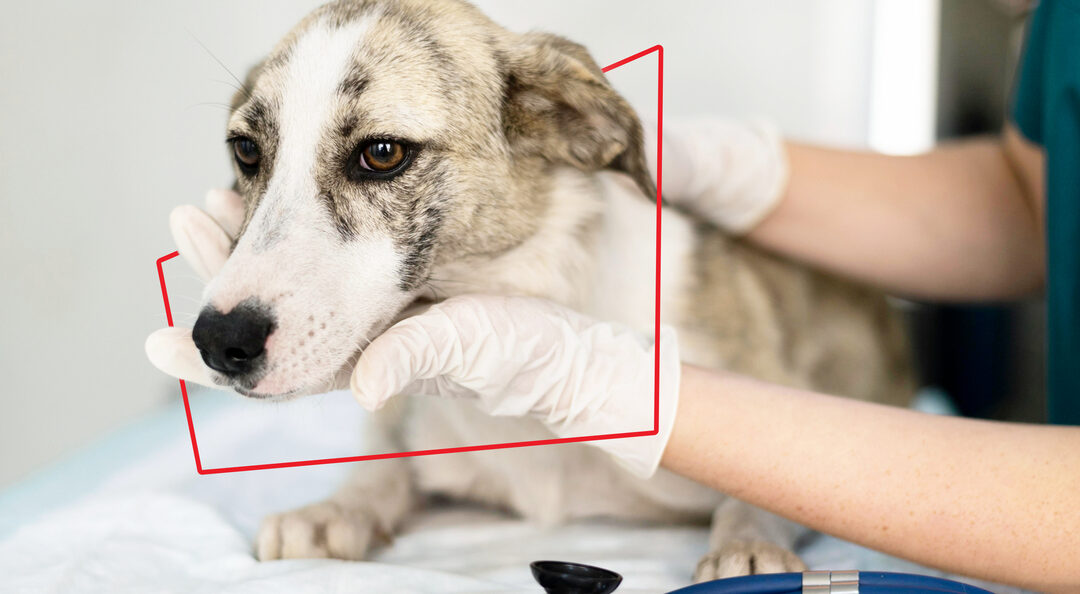Scabies or sarcoptic mange is a highly contagious infection caused by mites, parasites that belong to the arachnid family and that infest the skin of animals causing dermatological lesions.
What is scabies or sarcoptic mange?
It is a very contagious zoonotic disease that affects the skin and is characterized by the appearance of a high degree of itching in the animal. There are several types of mange, but the most common in dogs is sarcoptic mange, which is caused by the Sarcoptes scabiei mite and is also commonly called canine mange.
The parasites that infest the skin of animals are tiny arachnids, usually measuring about 2 millimeters, hardly noticeable by the human eye. The mite feeds on the dog’s tissues, digging tunnels to lay eggs that hatch after 3 to 10 days. The cycle lasts from 17 to 21 days and these parasites live and reproduce on the animal’s skin.
How can your dog get mange?
Scabies or sarcoptic mange is spread through direct contact, so its prevention is complicated and even more so if it concerns animals. Diagnosis is difficult and a large percentage of cases are not treated properly, something that makes the disease even more contagious. This disease is common in dogs of all ages, breeds, and both sexes, but it is more frequent in puppies and unsterilized dogs.

The most common symptoms of scabies in animals
In many cases, the symptomatology of scabies can be confused with the symptoms of atopic dermatitis, complicating the diagnosis. Although it is important to keep in mind that the clinical picture of scabies tends to get much worse if the appropriate treatment is not received. The infection can lead to fever, weight loss, secondary pyodermas and even more serious disorders.
The main clinical sign of scabies is the appearance of pruritus, which is an itchy feeling that provokes the desire to scratch the skin. As a result of scratching, wounds or injuries to the skin occur.
Although the symptoms are manifested in a generalized way by the body of dogs, if you suspect that your dog is infected with mange, you can keep an eye on the ears and elbows, which are the parts of the body where the most visible signs are concentrated. Excessive hair loss is also a noticeable symptom.
What is the most common treatment?
Once the disease is detected, it is very important that treatment begins as soon as possible. The treatment is based on acaricides, which can be administered topically through pipettes, orally with tablets or, depending on the stage of the infection, by injections. In addition, to combat itching, painkillers are also usually prescribed. These antiparasitics are very effective and usually eliminate the disease 100% but it is important that your dog finishes the indicated treatment, otherwise the parasites can reproduce again. The recovery of your pet could take up to six weeks of treatment and although the mite disappears quickly, the itching may persist and it is essential to eliminate the mite eggs.
Types of scabies
Although sarcoptic mange is the most common, there are more types of this disease. Canine demodicosis is a type of mange that usually appears in puppies, most common in animals from 3 to 6 months of age. The upper lip and eyelashes are the starting points of the disease, which then manifests itself in the dorsal area of the nose, forehead and ears. The illness is mild and usually lasts between 6 and 8 weeks.
On the other hand, there is also otodectic mange, this type is spread between animals (dogs and cats) and manifests itself in the ears. It tends to produce otitis, itching and general malaise, to detect it, you can check if your pet’s ears contain white dots that have movement. The disease is not serious, but it is very contagious. Otodectic mange is not a zoonosis so there is a possibility of contagion to people.


